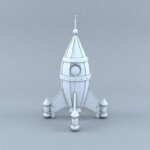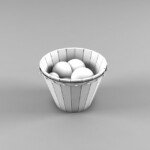Unlock Manufacturing Freedom: The DIY CNC Machine Journey (and when to call a professional)
The call of the spindle, the precise dance of the tool carved into materials – CNC machining embodies modern manufacturing magic. For tinkerers, manufacturers and small entrepreneurs, the dream of bringing this ability in-house is powerful. Building your own CNC machine (DIY CNC) is an increasingly popular project with promising control, customization and great satisfaction with creation. But is it always the right path? Let’s dive into the world of DIY CNC, explore its charm, challenges, and know when working with experts like Great Become a smarter strategy.
Why build your own CNC machine? DIY charm
The DIY CNC movement thrives on several compelling drivers:
- Cost savings (possible): Commercial CNC machines, especially Multi-axis, carrying huge price tags. Building your own, especially simpler 3-axis machines can be significantly cheaper using easy-to-use components such as stepper motors, linear rails, controllers (usually based on Arduino/Raspberry Pi) and open source software (e.g. GRBL, LinuxCNC, Mach3).
- Unrivaled customization and learning: Need a machine suitable for the workspace? Want unique features? DIY places you in the driver’s seat. The architectural process itself has an in-depth understanding of mechanics, electronics and programming – an unparalleled educational experience.
- Manufacturers are proud and solve problems: Have great satisfaction with your own precise tools. The iterative process of troubleshooting and perfecting honors has valuable engineering skills.
- Accessibility of amateurs and prototypes: DIY CNC opens doors for hobbyists and startups to create prototypes, custom parts, artwork or small batches without a large upfront investment. It democratizes access to obtain subtraction manufacturing.
Facing the reality: The challenge of the DIY CNC path
Tempting While DIY CNC buildings are not without major obstacles:
- Precise Limitations: Implement and maintain Industrial-grade precision (Microns) is the hard work of DIY. Factors such as frame stiffness, rebound in lead screws or belts, component mass, thermal expansion and vibration control are often underestimated. result: Milled parts often require a lot of manual completion or may not meet strict tolerances.
- Complexity jump with axes: The basic 3-axis DIY build (X, Y, Z motion) is complex but easy to manage. Adding a 4th axis (rotating around X) on the X and Y/Z axes, especially the fifth axis (rotating around X and Y/Z axes at the same time) increases complexity, requires complexity, requires complex mechanics, kinematics, advanced control systems (beyond GRBL), and complex CAM programming skills. The DIY True 5-axis anomaly is unusual and full of performance compromises.
- Time Investment and Skill Requirements: This is not a weekend project. Design, procure parts, assembly, wiring, configuration firmware/software, calibration, and unlimited adjustments for hundreds of hours. Essential CAD (design), CAM (tool path generation), electronics, mechanics and troubleshooting are essential.
- Material and Dimension Constraints: DIY machines often struggle with harder materials other than aluminum or brass, such as metal. Spindle power, stiffness and vibration become the main limitations. The build volume is also usually smaller than the industrial peers.
- Software and Control Obstacles: Integrate control software (e.g. GRBL/MACH3), CAD software (for design), CAM software (for generating tool paths) and understanding complex G code, especially for multi-axis motion, presenting a steep software learning curve.
- Security Question: High-speed rotating tools and strong forces require strict safety protocols (shells, interlocks, electronic docks). These critical security aspects are sometimes overlooked by DIY projects.
Beyond DIY: When Professional Accuracy Is Critical
This is where to build partnerships with expert manufacturers Great Convert from option to necessary. Especially when:
- Accuracy is not negotiable: If your parts require microscopic tolerances, perfect finishes and guarantee repeatability for critical applications.
- Complex geometry requires true 5 axes: Parts with complex undercuts, deep cavity, composite curves or features that require simultaneous operation from multiple angles – true industrial grade 5-axis CNC machining is essential. DIY simply can’t achieve this economically or reliably.
- Variety or challenging materials: Need parts in a strong alloy (stainless steel, titanium), foreign metals or high performance plastics? Industrial machines provide rigid, overhead power and cutting tool technology to handle them efficiently.
- Time to market is crucial: If you need a reliable, quick and few months of development time for DIY machines, professional services will completely eliminate the build process.
- Volume and scalability: Go beyond one-time prototypes to larger batches? Professional manufacturers like Great For scalable, repeatable production.
GRESTLIGHT: Your companion in high-performance CNC machining
Why choose Great? We bridge the gap between DIY aspirations and industrial reality with unparalleled capabilities:
- Advanced 5-axis CNC strength: We operate a refined 5-axis CNC machining center, which can be processed simultaneously. This allows for the freedom of design for complex part geometry, reduce settings, improve accuracy and even index 4 axes. View the example diagram of complex parts [Mentally visualize an image showing a complex impeller or turbine blade being machined from multiple angles].
- Uncompromising accuracy and quality: Rigid construction, carefully calibrated machines, advanced metrology (CMM) and rigorous quality processes ensure that parts meet the most stressful tolerances and finish requirements.
- Material expertise: We can specialize in handling all kinds of metals and plastics from aluminum and brass to hardened steel, stainless steel, titanium, Inconel, Peek, Delrin and more. Ask us about your materials!
- A true one-stop solution: Beyond the core processing, Great Provides comprehensive post-treatment: precision grinding, heat treatment, anodizing, electroplating, powder coating, plating and assembly. Simplify your supply chain.
- Speed and reliability: Specialized project engineering and optimized production planning ensure fast turnaround of custom precision parts, even for complex geometries.
- Large-scale cost-effectiveness: Utilize our expertise and efficiency to get the best value of high-quality CNC mechanical parts, especially in production operations.
in conclusion
Building a DIY CNC machine is a meaningful intellectual and technical challenge that provides amateurs and tinkerers with valuable learning and creative freedom to work on non-critical projects. It reveals the manufacturing process and the capabilities it empowers manufacturers. However, the leap towards consistent, high-precision machining, especially for complex geometries in demanding materials, requires industrial muscle.
Investing in a professional CNC machining partner in Greatlight (Greatlight) is more than just a fee – it guarantees quality, performance and project success. We bring decades of expertise, cutting-edge 5-axis technology and are committed to solving your toughest metal (and plastic) manufacturing challenges efficiently and cost-effectively.
FAQ (FAQ)
Q: Which CNC machine is easiest to DIY?
A: 3-axis router-style CNC machines (usually using wood or MDF for frames and cutting softer materials (such as wood, plastic or soft aluminum)) are usually the most achievable DIY projects. Kits with pre-cut pieces are popular entry points.
Q: How much does it cost to build a DIY CNC and buy professional parts?
A: The price of a basic 3-axis wooden router DIY ranges from $500-$2000. More robust/aluminum-cut DIYs may reach $3000-$8000+. However, this is the cost No Consider your significant investment in time for design, build, calibrate and troubleshooting. The cost of professional parts depends largely on complexity, material, quantity and post-processing, but provides guaranteed industrial accuracy for mature equipment without construction risks. For complex parts, DIY ability Even for prototypes, the cost is usually more than outsourcing.
Q: Can a DIY machine achieve 5-axis function?
Answer: And mechanical Possible to use ready-made rotating components to implement realFor DIY, reliable and high-precision simultaneous processing is very complicated. Control software, kinematics, advanced CAM programming, rebound elimination and required overall rigidity are huge challenges, making the true DIY 5 axis largely impractical to compare with industrial solutions.
Q: What advantages does Greatlight’s 5-axis CNC offer over standard 3-axis?
A: Greglight’s 5-axis machine:
- Enable single setting processing: Complicated parts, with five aspects of functions, fewer operations, and fewer errors and lead time.
- Access complex geometric shapes: The intricate shapes of the machine (undercut, organic curve) cannot use 3-axis efficiency or extremely low efficiency.
- Improve surface surface: Continuous optimization tool method angle.
- Use shorter tools: Improves rigidity, accuracy, and allows for higher depth functional accuracy.
- Improve efficiency: Save a lot of time on complex parts.
Q: Which materials can be used in Greatlight Machine?
A: We specialize in a vast array of metals including Aluminum (all series), Stainless Steels (303, 304, 316, 17-4PH, etc.), Steel (Mild, Alloy, Tool Steel), Brass, Copper, Titanium, Inconel, and various high-performance plastics like PEEK, Delrin (Acetal), Nylon, PTFE, UHMW, and Polycarbonate.
Q: Can Greatlight handle prototyping and production runs?
Answer: Absolutely! Gremight excels in rapid prototyping (Quickly deliver precision parts to prove the design) and scale Production and processing (Efficiently handle large batches with consistent quality), all with our advanced 5-axis capabilities.
Q: How to get a quote for the custom CNC machining section?
Answer: It’s very easy! Visit our website [Insert GreatLight Website Here – e.g., www.greatlightmachining.com] And upload your CAD file (steps, IGES, SLDPRT, etc.). Details such as materials, quantities, tolerances, finishes and any aftertreatment requirements are provided. Our expert engineers will quickly provide competitive quotes! Customize your precision parts now at the best prices!

















